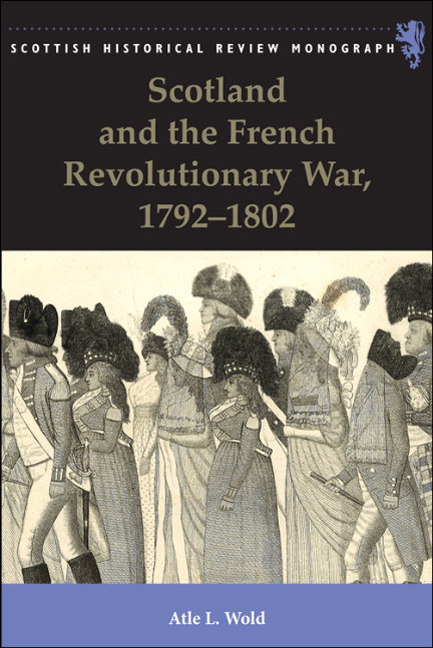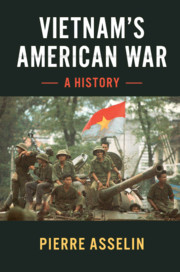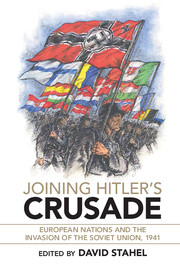Refine search
Actions for selected content:
15418 results in Military history
Contributors
-
- Book:
- Joining Hitler's Crusade
- Published online:
- 15 December 2017
- Print publication:
- 21 December 2017, pp x-xiv
-
- Chapter
- Export citation
3 - Hungary
- from Part I - The National Armies
-
-
- Book:
- Joining Hitler's Crusade
- Published online:
- 15 December 2017
- Print publication:
- 21 December 2017, pp 79-106
-
- Chapter
- Export citation
6 - Croatia
- from Part I - The National Armies
-
-
- Book:
- Joining Hitler's Crusade
- Published online:
- 15 December 2017
- Print publication:
- 21 December 2017, pp 158-190
-
- Chapter
- Export citation
Contents
-
- Book:
- Joining Hitler's Crusade
- Published online:
- 15 December 2017
- Print publication:
- 21 December 2017, pp v-vi
-
- Chapter
- Export citation
Copyright page
-
- Book:
- Joining Hitler's Crusade
- Published online:
- 15 December 2017
- Print publication:
- 21 December 2017, pp iv-iv
-
- Chapter
- Export citation
11 - France
- from Part II - The Volunteers
-
-
- Book:
- Joining Hitler's Crusade
- Published online:
- 15 December 2017
- Print publication:
- 21 December 2017, pp 288-316
-
- Chapter
- Export citation
Acknowledgements
-
- Book:
- Joining Hitler's Crusade
- Published online:
- 15 December 2017
- Print publication:
- 21 December 2017, pp xviii-xviii
-
- Chapter
- Export citation
4 - Slovakia
- from Part I - The National Armies
-
-
- Book:
- Joining Hitler's Crusade
- Published online:
- 15 December 2017
- Print publication:
- 21 December 2017, pp 107-133
-
- Chapter
- Export citation
9 - Denmark
- from Part II - The Volunteers
-
-
- Book:
- Joining Hitler's Crusade
- Published online:
- 15 December 2017
- Print publication:
- 21 December 2017, pp 236-259
-
- Chapter
- Export citation
Part III - Collaborators from within the Soviet Union
-
- Book:
- Joining Hitler's Crusade
- Published online:
- 15 December 2017
- Print publication:
- 21 December 2017, pp 341-426
-
- Chapter
- Export citation
Index
-
- Book:
- Joining Hitler's Crusade
- Published online:
- 15 December 2017
- Print publication:
- 21 December 2017, pp 427-438
-
- Chapter
- Export citation
10 - Belgium
- from Part II - The Volunteers
-
-
- Book:
- Joining Hitler's Crusade
- Published online:
- 15 December 2017
- Print publication:
- 21 December 2017, pp 260-287
-
- Chapter
- Export citation
1 - Finland
- from Part I - The National Armies
-
-
- Book:
- Joining Hitler's Crusade
- Published online:
- 15 December 2017
- Print publication:
- 21 December 2017, pp 17-45
-
- Chapter
- Export citation

Scotland and the French Revolutionary War, 1792–1802
-
- Published by:
- Edinburgh University Press
- Published online:
- 20 December 2017
- Print publication:
- 07 July 2015

Vietnam's American War
- A History
-
- Published online:
- 15 December 2017
- Print publication:
- 11 January 2018

Joining Hitler's Crusade
- European Nations and the Invasion of the Soviet Union, 1941
-
- Published online:
- 15 December 2017
- Print publication:
- 21 December 2017
7 - Integrating Newcomers
- from Part II - Learning in Practice
-
- Book:
- Learning to Fight
- Published online:
- 24 November 2017
- Print publication:
- 14 December 2017, pp 204-239
-
- Chapter
- Export citation
1 - The Legacy of the Past
- from Part I - The Practice of Learning
-
- Book:
- Learning to Fight
- Published online:
- 24 November 2017
- Print publication:
- 14 December 2017, pp 19-50
-
- Chapter
- Export citation
A Note on Vietnamese Names, Military Ranks, and the Spelling of the Words “Communist” and “Communism”
-
- Book:
- The Vietnam War Reexamined</I>
- Published online:
- 11 December 2017
- Print publication:
- 14 December 2017, pp xii-xiii
-
- Chapter
- Export citation
Index
-
- Book:
- Learning to Fight
- Published online:
- 24 November 2017
- Print publication:
- 14 December 2017, pp 272-278
-
- Chapter
- Export citation
